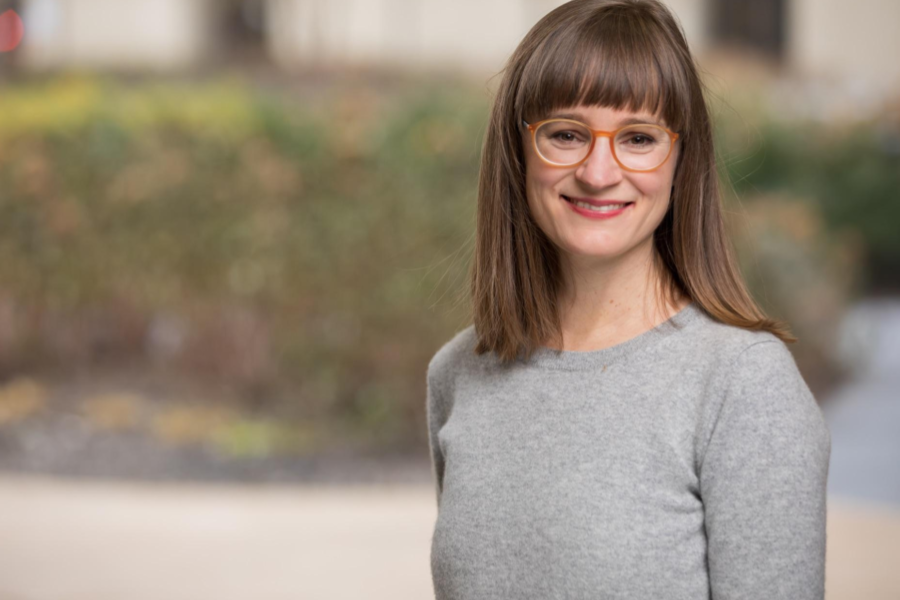
Direct care workers are an essential part of supporting an aging population, particularly as more people favor aging in place over nursing homes and require in-home assistance with daily activities. Yet, as Minnesota continues to emerge from the COVID-19 pandemic, concerns about the state’s direct care workforce remain.
Recent research from the Rural Health Research Center at the University of Minnesota School of Public Health (SPH) shows that the problem is especially acute in rural areas of the state. SPH’s Janette Dill answers questions about Minnesota’s direct care workforce and why disparities exist between urban and rural areas of the state.
Q: How would you describe the direct care workforce in Minnesota?
Prof. Dill: When people think about the healthcare workforce, they think about nurses, therapists, physicians and other care providers, but the large majority of the long-term care workforce is direct care workers — people with job titles like nursing assistants, home health aides and personal care aides. In general, these are low-wage jobs with little or no benefits; it’s not uncommon for a home health aide to make $12 an hour. The long-term care workforce in Minnesota is composed almost exclusively of women, and disproportionately by women of color and immigrant women.
Q: Why is this workforce in a state of crisis?
Prof. Dill: Minnesota’s long-term care sector is suffering from severe staffing shortages — it’s really hard to recruit people into these jobs. There's evidence that nursing homes are closing because of staffing shortages and direct care workers face burnout from long hours of hard work at low pay. The staffing shortages are having a real impact on patient care; for example, patients who would prefer to remain at home are ending up in assisted living facilities because there are no home health agencies to serve them.
Q: The crisis is especially acute in rural Minnesota. Why is that?
Prof. Dill: Our research found that there are about 35% more home health aides per capita in urban areas versus rural parts of the state. There seems to be a number of factors driving that difference. For one, there are more workers available, and more home health agencies, in urban areas. Part of this is demographics; in rural areas, the population is older and there are fewer young people to perform care work jobs. Another factor is geography — people live farther apart in rural Minnesota, making it harder for short-staffed health agencies to reach their patients.
Q: How did the COVID-19 pandemic impact Greater Minnesota’s direct care workforce?
Prof. Dill: In the beginning of the pandemic, when large parts of the economy shut down, healthcare remained one of the places in rural Minnesota where people could still find work. Health care workers described this period as surprisingly fulfilling; staffing levels were good and people said they found the work meaningful. But as the economy recovered people started to leave care jobs for other opportunities, leaving direct care facilities and agencies critically understaffed. So while the pandemic was difficult and demanding, many care workers we spoke with found it preferable to the current situation.
Q: Are there steps policymakers can consider to address this challenge?
Prof. Dill: This is a large-scale challenge and there are no quick fixes. The low pay is a big problem. One thing I argue throughout my research is, because this is work that’s done predominantly by women and women of color, we expect that they'll do it for a very low rate. If we want to attract more people to do this work, we have to value this work at a higher rate. I acknowledge that's a big challenge.
This is hard work, for low pay. But we see in other sectors — manufacturing or municipal jobs in sanitation and maintenance, for example — that people are willing to do hard jobs if there are pay and benefits packages that allow them to participate in the middle class. Direct care jobs could be an opportunity for women living in rural areas to have economic stability and stability for their families.
Janette Dill is an associate professor in the School of Public Health. Her research focuses on the health care workforce, including measuring regional variation in the supply of the direct care workforce, racial and gender disparities in the rewards for professional certification and unionization among direct care workers, and measuring the employment behavior and intentions of direct care workers during and after the COVID-19 pandemic.
About “Talking...with U of M”
“Talking...with U of M” is a resource whereby University of Minnesota faculty answer questions on current and other topics of general interest. Feel free to republish this content. If you would like to schedule an interview with the faculty member or have topics you’d like the University of Minnesota to explore for future “Talking...with U of M,” please contact University Public Relations at [email protected].
About the School of Public Health
The University of Minnesota School of Public Health improves the health and wellbeing of populations and communities around the world by bringing innovative research, learning, and concrete actions to today’s biggest health challenges. We prepare some of the most influential leaders in the field, and partner with health departments, communities, and policymakers to advance health equity for all. Learn more at sph.umn.edu.
- Categories:
- Health




